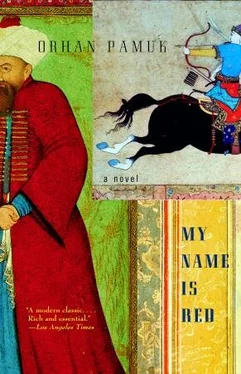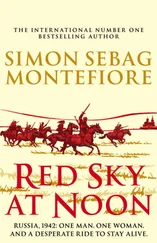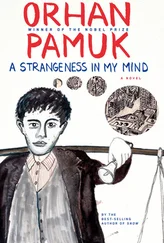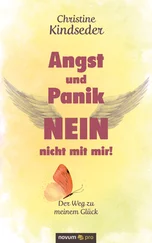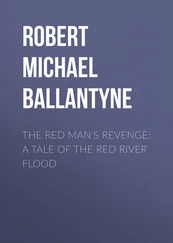“What are the morals of the three stories you’ve told?” asked Black in a manner that summed everything up and ever so slightly called me to account.
“Alif,” I said. “The first story with the minaret demonstrates that no matter how talented a miniaturist might be, it is time that makes a picture ”perfect.“ ”Ba,“ the second story with the harem and the library, reveals that the only way to escape time is through skill and illustrating. As for the third story, you proceed to tell me, then.”
“Djim!” said Black confidently, “the third story about the one-hundred-and-nineteen-year-old miniaturist unites ”Alif“ and ”Ba‘ to reveal how time ends for the one who forsakes the perfect life and perfect illuminating, leaving nothing but death. Indeed, this is what it demonstrates.“
I AM CALLED “OLIVE”
After the midday prayers, I was ever so swiftly yet pleasurably drawing the darling faces of boys when I heard a knock at the door. My hand jerked in surprise. I put down my brush. I carefully placed the work-board that was on my knees off to the side. Rushing like the wind, I said a prayer before opening the door. I won’t withhold anything from you, because you, who can hear me from within this book, are much nearer to Allah than we in this filthy and miserable world of ours. Akbar Khan, the Emperor of Hindustan and the world’s richest shah, is preparing what will one day become a legendary book. To complete his project, he sent word to the four corners of Islamdom inviting the world’s greatest artists to join him. The men he’d sent to Istanbul visited me yesterday, inviting me to Hindustan. This time, I opened the door to find, in their place, my childhood acquaintance Black, about whom I’d forgotten entirely. Back then he wasn’t able to keep our company, he was jealous of us. “Yes?”
He said he’d come to converse, to pay a friendly visit, to have a look at my illustrations. I welcomed him so he might see it all. I learned he’d just today visited Head Illuminator Master Osman and kissed his hand. The great master, he explained, had given him wise words to ponder: “A painter’s quality becomes evident in his discussions of blindness and memory,” he’d said. So let it be evident:
Blindness and Memory
Before the art of illumination there was blackness and afterward there will also be blackness. Through our colors, paints, art and love, we remember that Allah had commanded us to “See”! To know is to remember that you’ve seen. To see is to know without remembering. Thus, painting is remembering the blackness. The great masters, who shared a love of painting and perceived that color and sight arose from darkness, longed to return to Allah’s blackness by means of color. Artists without memory neither remember Allah nor his blackness. All great masters, in their work, seek that profound void within color and outside time. Let me explain to you what it means to remember this darkness, which was revealed in Herat by the great masters of old.
Three Stories on Blindness and Memory
ALIF
In Lami’i Chelebi’s Turkish translation of the Persian poet Jami’s Gifts of Intimacy , which addresses the stories of the saints, it is written that in the bookmaker’s workshop of Jihan Shah, the ruler of the Blacksheep nation, the renowned master Sheikh Ali Tabrizi had illustrated a magnificent version of Hüsrev and Shirin . According to what I’ve heard, in this legendary manuscript, which took eleven years to complete, the master of master miniaturists, Sheikh Ali, displayed such talent and skill and painted such wonderful pictures that only the greatest of the old masters, Bihzad, could have matched him. Even before the illuminated manuscript was half finished, Jihan Shah knew that he would soon possess a spectacular book without equal in all the world. He thus lived in fear and jealousy of young Tall Hasan, the ruler of the Whitesheep nation, and declared him his archenemy. Moreover, Jihan Shah quickly sensed that though his prestige would grow immensely after the book was completed, an even better version of the manuscript could be made for Tall Hasan. Being one of those truly jealous men who poisoned his own contentment with the thought “What if others come to know such bliss?” Jihan Shah sensed at once that if the virtuoso miniaturist made another copy, or even a better version, it would be for his archenemy Tall Hasan. Thus, in order to prevent anyone besides himself from owning this magnificent book, Jihan Shah decided to have the master miniaturist Sheikh Ali killed after he’d completed the book. But a good-hearted Circassian beauty in his harem advised him that blinding the master miniaturist would suffice. Jihan Shah forthwith adopted this clever idea, which he passed on to his circle of sycophants, until it ultimately reached the ears of Sheikh Ali. Even so, Sheikh Ali didn’t leave the book half finished and flee Tabriz as other, mediocre illustrators might’ve done. He didn’t resort to games like slowing down the progress of the manuscript or making inferior illustrations so it wouldn’t be “perfect” and thereby forestalling his imminent blinding. Indeed, he worked with even more ardor and conviction. In the house where he lived alone, he’d begin working after the morning prayers and continue illustrating the same horses, cypresses, lovers, dragons and handsome princes by candlelight in the middle of the night again and again until bitter tears streamed from his eyes. Much of the time, he’d gaze for days at an illustration by one of the great old masters of Herat as he made an exact copy on another sheet. In the end, he completed the book for Jihan Shah the Blacksheep, and as the master miniaturist had expected, he was at first praised and showered with gold pieces, before being blinded with a sharp plume needle used to affix turban plumes. Before his pain had even subsided, Sheikh Ali left Herat and went to join Tall Hasan the Whitesheep. “Yes, indeed, I am blind,” he explained to Tall Hasan, “yet I remember each of the splendors of the manuscript I’ve illuminated for the last eleven years, down to each mark of the pen and each stroke of the brush, and my hand can draw it again from memory. My Excellency, I could illustrate the greatest manuscript of all time for you. Since my eyes will no longer be distracted by the filth of this world, I’ll be able to depict all the glories of Allah from memory, in their purest form.” Tall Hasan believed the great master miniaturist; and the master miniaturist, keeping his promise, illustrated from memory the most magnificent of books for the ruler of the Whitesheep. Everyone knew the spiritual power provided by the new book was what lay behind Tall Hasan’s subsequent defeat of the Blacksheep and the victorious Khan’s execution of Jihan Shah during a raid near Bingöl. This magnificent book, along with the one Sheikh Ali Tabrizi made for the late Jihan Shah, entered Our Sultan’s treasury in Istanbul when the ever-victorious Tall Hasan was defeated at the Battle of Otlukbeli by Sultan Mehmet Khan the Conqueror, may he rest in peace. Those who can truly see, know.
BA
Since the Denizen of Paradise, Sultan Süleyman Khan the Lawgiver, favored calligraphers over illustrators, unfortunate miniaturists of the day would recount the present story as an example of how illustrating surpasses calligraphy. However, as anyone who pays close attention will realize, this tale is actually about blindness and memory. After the death of Tamerlane, Ruler of the World, his sons and grandchildren set to attacking and mercilessly battling one another. In the event that one of them succeeded in conquering another’s city, his first action was to mint his own coins and have a sermon read at the mosque. His second act as victor was to pull apart the books that had come into his possession; a new dedication would be written, boasting of the conqueror as the new “ruler of the world,” a new colophon added, and it would all be bound together again so that those who laid eyes on the conqueror’s book would believe that he truly was a world ruler. When Abdüllatif, the son of Tamerlane’s grandson Uluğ Bey, captured Herat, he mobilized his miniaturists, calligraphers and binders with such haste, and so pressured them to make a book in honor of his father, a connoisseur of book arts, that as volumes were in the midst of being unbound and the scripted pages destroyed and burned, the corresponding pictures became mixed up. Since it did not befit the honor of Uluğ Bey for his son to arrange and bind albums without a care for which picture belonged to which story, he assembled all the miniaturists in Herat and requested that they recount the stories so as to put the illustrations in proper order. From each miniaturist’s mouth, however, came a different account, and so the correct order of the plates was confused all the more. Thereupon, the oldest surviving head miniaturist was sought out. He was a man who’d extinguished the light of his eyes in painstaking labor on the books of all the shahs and princes who’d ruled over Herat for the last fifty- four years. A great commotion ensued when the men realized that the old master now peering at the pictures was indeed blind. Some laughed. The elderly master requested that an intelligent boy, who had not yet reached the age of seven and who couldn’t read or write, be brought forward. Such a child was found and taken to him. The old miniaturist placed a number of illustrations before him. “Describe what you see,” he instructed. As the boy described the pictures, the old miniaturist, raising his blind eyes to the sky, listened carefully and responded: “Alexander cradling the dying Darius from Firdusi’s Book of Kings … the account of the teacher who falls in love with his handsome student from Sadi’s Rosegarden …the contest of doctors from Nizami’s Treasury of Secrets …” The other miniaturists, vexed by their elderly and blind colleague, said, “We could’ve told you that as well. These are the best-known scenes from the most famous stories.” In turn, the aged and blind miniaturist placed the most difficult illustrations before the child and again listened intently. “Hürmüz poisoning the calligraphers one by one from Firdusi’s Book of Kings ,” he said, again facing the sky. “A cheap rendition of the terrible account of the cuckold who catches his wife and her lover in a pear tree, from Rumi’s Masnawi ,” he said. In this fashion, relying on the boy’s descriptions, he identified all of the pictures, none of which he could see, and thereby succeeded in having the books properly bound together again. When Uluğ Bey entered Herat with his army, he asked the old miniaturist by what secret he, a blind man, could identify those stories that other master illustrators couldn’t determine even by looking at them. “It isn’t, as one might assume, that my memory compensates for my blindness,” replied the old illustrator. “I have never forgotten that stories are recollected not only through images, but through words as well.” Uluğ Bey responded that his own miniaturists knew those words and stories, but still couldn’t order the pictures. “Because,” said the old miniaturist, “they think quite well when it comes to painting, which is their skill or their art, but they don’t comprehend that the old masters made these pictures out of the memories of Allah Himself.” Uluğ Bey asked how a child could know such things. “The child doesn’t know,” said the old miniaturist. “But I, an elderly and blind miniaturist, know that Allah created this worldly realm the way an intelligent seven-year-old boy would want to see it; what’s more, Allah created this earthly realm so that, above all, it might be seen. Afterward, He provided us with words so we might share and discuss with one another what we’ve seen. We mistakenly assumed that these stories arose out of words and that illustrations were painted in service of these stories. Quite to the contrary, painting is the act of seeking out Allah’s memories and seeing the world as He sees the world.”
Читать дальше
